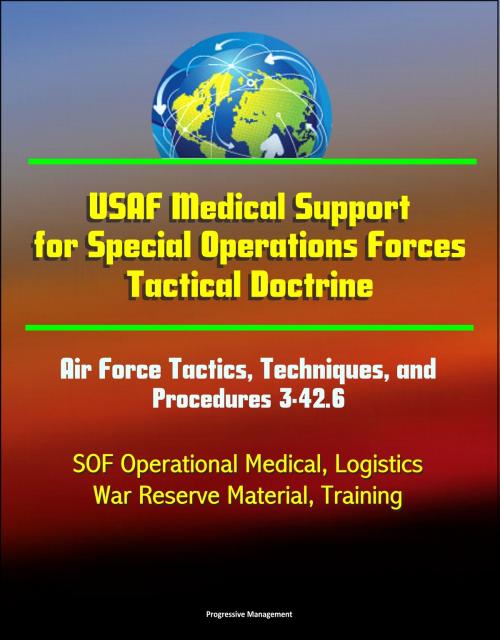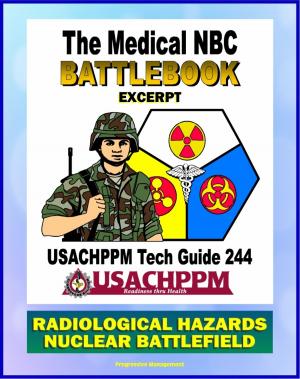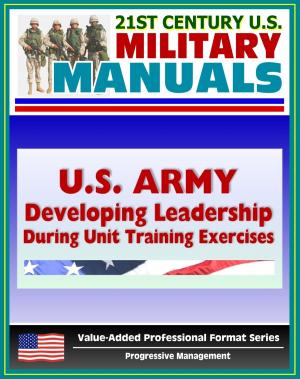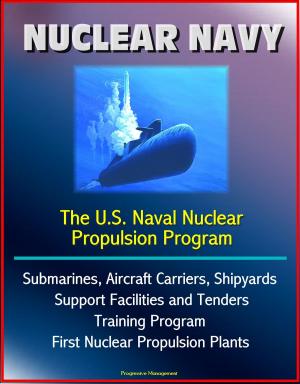USAF Medical Support for Special Operations Forces Tactical Doctrine: Air Force Tactics, Techniques, and Procedures 3-42.6 - SOF Operational Medical, Logistics, War Reserve Material, Training
Nonfiction, History, Military| Author: | Progressive Management | ISBN: | 9781310364891 |
| Publisher: | Progressive Management | Publication: | January 11, 2015 |
| Imprint: | Smashwords Edition | Language: | English |
| Author: | Progressive Management |
| ISBN: | 9781310364891 |
| Publisher: | Progressive Management |
| Publication: | January 11, 2015 |
| Imprint: | Smashwords Edition |
| Language: | English |
Special operations missions are conducted by specially organized, trained and equipped military forces to achieve military, political, economic or psychological objectives by unconventional means in hostile, denied, or politically sensitive areas. Whether operating from a main operating base (MOB), intermediate staging base (ISB), forward staging base (FSB), forward operating base (FOB), fire base (FB) or a combat outpost (COP), AFSOC medical assets provide medical Expeditionary Combat Support (ECS) and casualty evacuation (CASEVAC) during operational missions for Air Force Special Operations Forces (AFSOF) and other SOF. AFSOC medical teams and designated line units support SOF by providing both mission operations support as well as SOF base operations support. These capabilities include initial, trauma stabilization, ongoing combat trauma care including surgical capability and CASEVAC, limited patient holding for post-operative or seriously ill patients awaiting transport, as well as more routine preventive and acute medical care for deployed SOF personnel.
Chapter 1 - SOF MISSION, OPERATIONAL PRIORITIES AND CORE TASKS * 1.1. Mission * 1.2. USSOCOM Priorities * 1.3. SOF Truths * 1.4. SOF Core Activities * 1.5. AFSOC Mission * 1.6. SOF Operational Environment and Medical Support Implications * 1.7. AFSOC Medical Mission Statement. * Chapter 2 - ORGANIZATIONS, ROLES, AND RESPONSIBILITIES * 2.1. United States Special Operations Command (USSOCOM) * 2.2. Air Force Special Operations (AFSOC) * 2.3. AFSOC Medical Preparedness and Force Protection * 2.4. AFSOC Medical System * 2.5. Irregular Warfare/Medical Stability Operations (IW/MSO) * 2.6. Medical Foreign Internal Defense (FID)/Combat Aviation Advisors (CAA) * Chapter 3 -COMMAND, CONTROL, AND COMMUNICATION * 3.1. Lines of Communication (LOC) * 3.2. Joint Operations Command and Control (C2) Requirements * 3.3. AFSOC UTC Assignment * 3.4. Medical Command and Control * 3.5. Concept of Medical Oversight * Chapter 4 - EMPLOYMENT OF MEDICAL SUPPORT FOR SOF * 4.1. Deployment Concept * 4.2. Advantages * 4.3. Three Core Concepts of AFSOC Medicine in the Battlespace * 4.4. Casualty and Disease Management in SOF Operations * 4.5. Casualty Movement * Chapter 5 - SOF OPERATIONAL MEDICAL PLANNING CONSIDERATIONS * 5.1. Comprehensive Medical Planning * 5.2. AFSOC Interface with Medical Contingency Ground Support Systems * 5.3. Interface with Aeromedical Evacuation (AE) System * 5.4. Mission Planning * Chapter 6 - MEDICAL LOGISTICS AND WAR RESERVE MATERIAL (WRM) * 6.1. Medical Logistics Support for Special Operations UTCs and Medical WRM * 6.2. Medical Supplies and Equipment Operations * 6.3. Integration * 6.4. Ground Transportation Consideration * 6.5. Additional support * Chapter 7 - TRAINING * 7.1. Objective * 7.2. Responsibilities * 7.3. Medical Training Requirements * 7.4. Credentials * 7.5. Recruitment * Chapter 8 - COMMUNICATIONS * 8.1. Medical Communications * 8.2. Intra-team Communications * 8.3. Line-of-sight Communications * 8.4. Beyond Line-of-sight Communications * 8.5. Internet Access
Special operations missions are conducted by specially organized, trained and equipped military forces to achieve military, political, economic or psychological objectives by unconventional means in hostile, denied, or politically sensitive areas. Whether operating from a main operating base (MOB), intermediate staging base (ISB), forward staging base (FSB), forward operating base (FOB), fire base (FB) or a combat outpost (COP), AFSOC medical assets provide medical Expeditionary Combat Support (ECS) and casualty evacuation (CASEVAC) during operational missions for Air Force Special Operations Forces (AFSOF) and other SOF. AFSOC medical teams and designated line units support SOF by providing both mission operations support as well as SOF base operations support. These capabilities include initial, trauma stabilization, ongoing combat trauma care including surgical capability and CASEVAC, limited patient holding for post-operative or seriously ill patients awaiting transport, as well as more routine preventive and acute medical care for deployed SOF personnel.
Chapter 1 - SOF MISSION, OPERATIONAL PRIORITIES AND CORE TASKS * 1.1. Mission * 1.2. USSOCOM Priorities * 1.3. SOF Truths * 1.4. SOF Core Activities * 1.5. AFSOC Mission * 1.6. SOF Operational Environment and Medical Support Implications * 1.7. AFSOC Medical Mission Statement. * Chapter 2 - ORGANIZATIONS, ROLES, AND RESPONSIBILITIES * 2.1. United States Special Operations Command (USSOCOM) * 2.2. Air Force Special Operations (AFSOC) * 2.3. AFSOC Medical Preparedness and Force Protection * 2.4. AFSOC Medical System * 2.5. Irregular Warfare/Medical Stability Operations (IW/MSO) * 2.6. Medical Foreign Internal Defense (FID)/Combat Aviation Advisors (CAA) * Chapter 3 -COMMAND, CONTROL, AND COMMUNICATION * 3.1. Lines of Communication (LOC) * 3.2. Joint Operations Command and Control (C2) Requirements * 3.3. AFSOC UTC Assignment * 3.4. Medical Command and Control * 3.5. Concept of Medical Oversight * Chapter 4 - EMPLOYMENT OF MEDICAL SUPPORT FOR SOF * 4.1. Deployment Concept * 4.2. Advantages * 4.3. Three Core Concepts of AFSOC Medicine in the Battlespace * 4.4. Casualty and Disease Management in SOF Operations * 4.5. Casualty Movement * Chapter 5 - SOF OPERATIONAL MEDICAL PLANNING CONSIDERATIONS * 5.1. Comprehensive Medical Planning * 5.2. AFSOC Interface with Medical Contingency Ground Support Systems * 5.3. Interface with Aeromedical Evacuation (AE) System * 5.4. Mission Planning * Chapter 6 - MEDICAL LOGISTICS AND WAR RESERVE MATERIAL (WRM) * 6.1. Medical Logistics Support for Special Operations UTCs and Medical WRM * 6.2. Medical Supplies and Equipment Operations * 6.3. Integration * 6.4. Ground Transportation Consideration * 6.5. Additional support * Chapter 7 - TRAINING * 7.1. Objective * 7.2. Responsibilities * 7.3. Medical Training Requirements * 7.4. Credentials * 7.5. Recruitment * Chapter 8 - COMMUNICATIONS * 8.1. Medical Communications * 8.2. Intra-team Communications * 8.3. Line-of-sight Communications * 8.4. Beyond Line-of-sight Communications * 8.5. Internet Access















